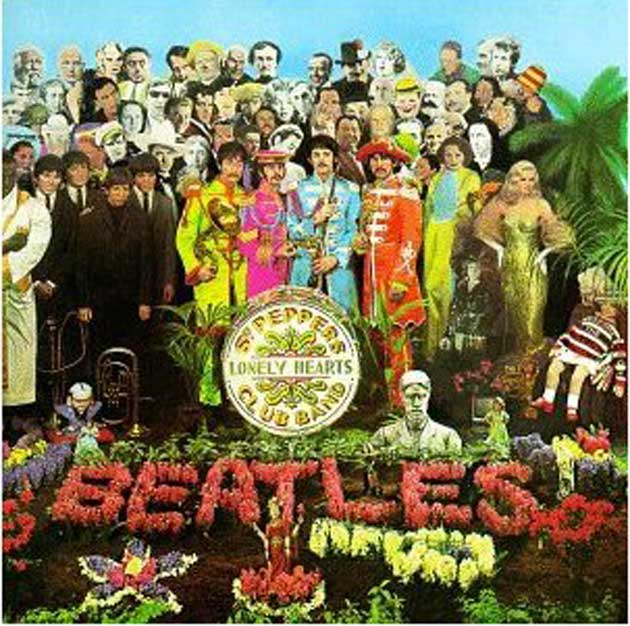Rock art... R.I.P?
The iPod has shrunk pop artwork to the size of a stamp. Can it survive? Paul Bignell and John Sunyer report

In little more than one square foot, the album cover captured the dreams, hopes and fears of a music-loving generation. If CDs left the record sleeve mortally wounded, downloading has performed the coup de grâce on album artwork.
The cover, considered as important as the music it housed, was considered integral to the whole experience of owning an LP, to be studied in minute detail by the rock fan.
In the 1950s, images of Elvis Presley, mouth agape, mid-song, on the cover of his debut album, helped teenagers across the world connect with their new hero. Then, in the Sixties, the Beatles took the album cover to another level – as a work of art.
Today, as technology has taken over, cover art has become nothing more than a postage stamp-sized image on an iPod screen.
An exhibition at the University of the Arts in London next month will reassess the importance of the album cover, and ask if it can survive in the digital revolution.
Spin: The Art of Record Design will exhibit original artwork that inspired some of the best-known cover art of the past four decades. At the end of the month, a discussion will also be held at the university on the future of album art. On the panel will be Faris Rotter, from rock band the Horrors, who also designs album covers.
Sir Peter Blake, who designed the sleeve for the Beatles' Sgt Pepper's Lonely Hearts Club Band, said: "It [album art] survived from the LP to the CD, but... if that becomes obsolete then I guess album art won't exist. I think it would be a big loss."
Designer Peter Saville, who is responsible for pioneering sleeve designs for Roxy Music and New Order in the Eighties, fears album art has had its day.
Speaking from his studio this weekend, Mr Saville believes that cover art is dead, not just because of technology, but because the youth culture in which albums once operated has changed: "We have a social disaster on our hands," he said. "The things that pop music was there to do for us have all been done... there's nothing to rail against now.
Enjoy unlimited access to 70 million ad-free songs and podcasts with Amazon Music
Sign up now for a 30-day free trial
Enjoy unlimited access to 70 million ad-free songs and podcasts with Amazon Music
Sign up now for a 30-day free trial
"When I was 15, in the North-west of England.... the record cover to me was like a picture window to another world. Seeing an Andy Warhol illustration on a Velvet Underground album was a revelation.... It was the art of your generation... true pop art."
Veteran keyboard player Rick Wakeman, once of the progressive rock band Yes, and now a DJ on the Planet Rock radio station, said: "With downloads and everything... it's just killing the whole art side of music stone dead. To be quite honest, unless you have 20-20 vision it's very hard to read anything written on a CD cover. There was something very special about [vinyl] albums... it's a great shame."
Record companies set aside up to £50,000 for the design of a leading band's album sleeve. The compact disc, launched in the Eighties, offered artists a much smaller canvas. Now, with the iPod, album design has shrunk to about a square inch, and the budget for its sleeve to about £5,000.
The new generation of designers is determined to make its mark, however. "Iconic sleeves can help to sell significant amounts of records," says Faris Rotter – real name, Faris Badwan. "If a band has put effort into the music, why not devote that same meticulousness to... the package?"
Tom Hingston, of Tom Hingston Studio, has designed covers for the Rolling Stones, Nick Cave and the Bad Seeds, Gnarls Barkley and others. He believes that there is still an opportunity for creating great images: "You are creating a sleeve that you want to be as iconic as possible.... It's got to work when it's a thumbnail on Amazon, it's got to work on the shelves at Tesco, and on the racks at HMV."
Mr Hingston also believes designers now have even more creative freedom: "With bands being able to sell music online, it frees designers from the constraints of retailers. For years, designers have had to work within the constraints of retailers like Tesco, HMV and Virgin. They dictated the packaging, the dual case CD, because of the racking that was designed specifically to stock dual cases. Years ago, if we proposed an alternative format, it was always knocked back because retailers wouldn't stock it.
"But now what is fantastic is that we see bands selling music online, where they can sell either a digital download or offer the option... to buy a special packaging version of the product, that can be mailed to them, that can be any shape, any size and any format."
To have your say on this or any other issue visit www.independent.co.uk/IoSblogs
Subscribe to Independent Premium to bookmark this article
Want to bookmark your favourite articles and stories to read or reference later? Start your Independent Premium subscription today.

Join our commenting forum
Join thought-provoking conversations, follow other Independent readers and see their replies